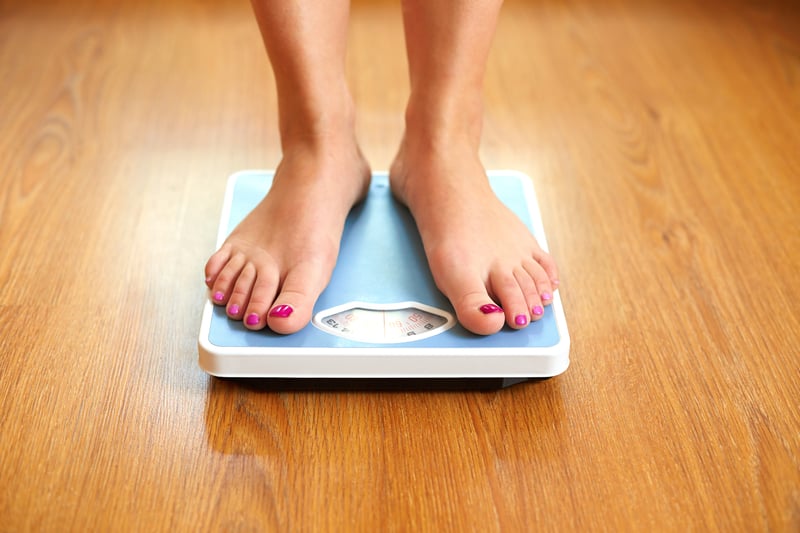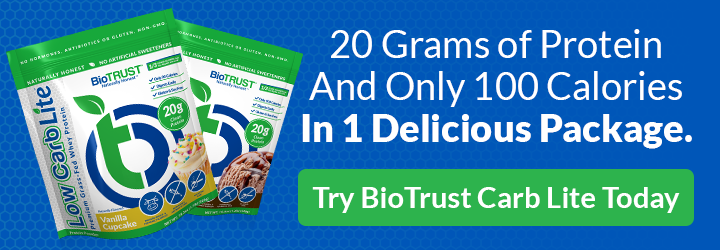Fat Loss vs. Weight Loss—What’s More Important?

Whoohoo! You’re another 5, 10, or even 15 pounds down according to your scale. Time to celebrate! Or is it? If you’re depending on just your scale, how do you know what you’ve lost? There’s a big difference between fat loss vs. weight loss.
Weight loss can come from not just body fat, but from muscle, water, and more. Fat loss, on the other hand, refers to only weight lost from fat stores. If your goal is to look and feel better, then it’s time to look beyond the scale as the scale measures everything from muscles to fat to bones to organs to water to even the food you’re digesting.
Yet for many of us, that number on the scale can determine how we feel about ourselves. If it’s lower, we feel good. If it’s higher, the day may start on a low note. And when that number won’t budge—despite how hard we’re working—it can feel downright discouraging.
If this sounds a bit too familiar, then it’s time to change your perspective as the scale is really a poor tool for measuring your success.
Fat Loss vs. Weight Loss: What’s the Difference
You can start a new diet, exercise, or weight-loss program and see a steep weight drop in a week. Or it can take several weeks, a month, or… depending on your weight, you may never see that desired drop in weight despite making dramatic changes.
That doesn’t mean, however, that you won’t see and feel dramatic changes in your body.
Your weight can depend on your gender, age, genetics, and other factors beyond your control. Often, with a new diet—especially one that’s lower in carbohydrates—the first thing you’ll lose is water weight. This is because carbohydrates can retain up to three times as much water as the other macronutrients. So, when carbs are cut, the body retains less water. It’s as simple as that.
If all you’re focused on is that number on the scale, then you may get excited by the fast progress from drastically reducing carbohydrates. Unfortunately, the effect is often short-lived.
This doesn’t necessarily mean you shouldn’t reduce carbs—especially refined carbohydrates—as this can be an effective method to lose fat as well. However, a more balanced calorie-restricted diet may lead to greater fat loss without the loss of water within the muscles.
On the other hand, if you’re creating a calorie deficit and increasing your activity levels, the scale can’t tell the whole story of how much your hard work is paying off.
In other words, what most of us mean when we say we want to lose weight is that we actually want to slim down. We want to lose fat around our waists, hips, thighs, arms, etc. Yet you can slim down quite a bit without actually losing any weight off the scale. Yes, you can lose inches without dropping a pound.
Finally, the scales can change a lot from day to day. Indeed, it can change as much as 10 pounds depending on what you eat and drink, your bathroom behavior, if you’re retaining water, and even depending on your hormone levels.
How To Know What You Are Losing?
Okay, so the scale only provides limited information: It can’t tell you if you’ve lost fat, muscle, or water. So, if you’re only using the scale to determine results, you won’t be getting the most reliable information.
If you want to find out what type of weight you’re losing, you’ll need at least one or two other tools. What are those tools?
- A bodyfat or skinfold caliper
- A tape measure
- A scale
- Photos
- How your clothes fit (For example, if you’re trying to get back into your “skinny jeans,” try them on once a month to see how they fit.)
- Performance goals (Instead of worrying about fat loss vs. weight loss, you can instead focus on improving the number of times you work out a week, how many whole-food meals you’re eating instead of fast food, how fast your runs are, or how many push-ups you can do or the weight you’re lifting for a particular exercise.)
It’s NOT About Your Weight
Many weight-loss plans and programs promise rapid weight loss. While you may indeed lose weight quickly, much of that weight is water and calorie-burning, health-enhancing muscle. Ensuring you maintain muscle mass when dieting is vital as muscle helps regulate blood sugar levels and blood fats (i.e., lipids and triglycerides), and it also helps balance inflammation. Muscle mass also directly impacts the calories you burn while at rest (BMR or basal metabolic rate) as well as insulin sensitivity and how well your body absorbs nutrients.
What’s more, when there’s a greater fat-to-muscle ratio, risk of chronic diseases like metabolic syndrome, heart disease, and diabetes increases. And lower muscle mass can lead to frailty and even disability. In short, having more muscle mass can help you stay strong and independent. And according to research, it’s also one of the best indicators of overall health and longevity.
How to Focus on Fat Loss vs. Weight Loss
You can drop weight rapidly by severely restricting calories. But if you want to lose fat vs. weight, then your approach needs to be different. Here’s how:
1. Eat Enough Protein
Protein is vital for maintaining your muscle mass. This is especially true when you’re trying to lose weight. In addition, protein supplies the nutrients needed for the enzymes needed for energy production and food digestion. They also are needed to regulate the immune system and ensure healthy fluid balance.
In one study that compared a high-protein (1.1 g protein/pound), low-calorie diet with a lower-protein (.55 g protein/pound), low-calorie diet combined with exercise, both groups lost weight. But the men who consumed more protein lost more fat (2.9 pounds) while gaining muscle (2.4) than the other group. 1 As you can see, while the participants lost a good amount of fat, their total weight barely budged.
Another meta-analysis of 20 different studies with women and men over 50 found that consuming greater amounts of protein helps maintain muscle mass while promoting greater fat loss than a low-protein diet. 2
You don’t have to count macronutrients if you don’t want to. Just add one to two palm-sized servings of protein-rich foods at every meal. This includes eggs, fish, poultry, meat, and even quality protein powders. If you are cutting back on (or eliminating) animal foods, there are great plant-based proteins as well from hemp, pumpkin, and chia seeds to beans and legumes to spirulina.
2. Exercise Regularly
Folks who exercise at least three times weekly (both cardio and resistance training) retain more muscle than those who try to lose weight without exercise. Some research indicates they hold onto 93% more lean mass. 3 Combining exercise with a higher-protein diet may be even more effective for helping maintain lean mass while reducing fat mass.
To make the most of your workout time, enjoy total-body strength workouts made up primarily of compound, multi-joint movements. This includes squats, pushups, and rows, for example. The workouts don’t need to be long or painful. Start with just 20- to 30-minute full-body workouts and strive to improve performance (such as weight, intensity, reps, or form) every week.
While you do want to push your muscles and yourself, you also need to allow your body to recover and repair. Give your muscles at least one day between workouts, and enjoy some less intense, longer workouts (e.g., walking, hiking, or swimming) to burn calories without overtaxing your body.
3. Reduce Calories
If you want to lose weight or fat, you’ll need to reduce calories or burn more calories to create a calorie deficit. The more fat you have to lose, the more aggressive you can be with calorie cutting. Yet it’s still recommended to gradually reduce calories to hold onto muscle mass and support a strong metabolism.
If calories are cut too drastically, this can lead the body to hold onto fat stores as it sheds muscle mass. For sustained fat loss vs. weight loss, aim to cut calories by only 500 to 600 per day rather than dropping calories down to 1,200 or less per day. 4
Aim for a loss of no more than two pounds a week (after an initial adjustment due to water). Otherwise, you’re likely losing lean mass in addition to fat mass.
Finally, ensure you’re getting plenty of nutrients by eating mostly nutritious whole foods like vegetables, quality proteins, fruits, and whole grains while avoiding high-sugar, ultra-processed, or fried foods.
RELATED: Collagen Doesn’t Work (Unless…)
4. Prioritize Sleep
With so much to do in a day, many people let sleep slide. Whether your goal is fat loss or weight loss, this is a big mistake. Ensuring you get enough quality sleep can both increase fat burning and fight off fat gain. Research has borne this out. For example, women who slept five or less hours per night were more likely to gain weight than those who got at least seven. 5
Other research has found that lacking sleep can also alter hunger hormones, leading to increased appetite and a higher risk of weight gain. 6
Fat Loss vs. Weight Loss: A Recap
Weight loss and fat loss are not the same. The goal is to lose weight specifically from fat stores. And if you’re exercising and eating plenty of protein, you will likely also see gains in muscle. This can mean that the results on the scale are minimal but the results in how you look and feel are dramatic.
To better measure your success, only use a scale combined with other measurements like bodyfat calipers, a tape measure, how your clothing looks, and how you look in photos. (Don’t just rely on a mirror as you may get used to the subtle changes and not realize how much fat you’ve really lost.)
The scale, however, does have one benefit. After folks have lost weight, research indicates that regularly weighing in can help people maintain weight loss over the long haul. 7 Just remember that your weight alone isn’t a reflection of your health, your value, your beauty, or how amazing you are. Better indicators of who you are include your kindness, your gratitude, your empathy, etc. And better indicators of your health include how you feel, your energy levels, endurance, and stamina, your mental functioning, and your overall strength.
If the scale is driving you nuts, kick it to the curb for a while and focus on the other measurements (especially performance or process-related goals like exercising consistently) so you can focus on all you are really accomplishing for your physical and mental health.





 7 Signs Your Body is Seriously Low on Collagen (not just wrinkles)
7 Signs Your Body is Seriously Low on Collagen (not just wrinkles) Health Expert: "Turmeric Doesn't Work (unless...)"
Health Expert: "Turmeric Doesn't Work (unless...)" 3 Warning Signs Your Probiotic Supplement is a Total Waste
3 Warning Signs Your Probiotic Supplement is a Total Waste

